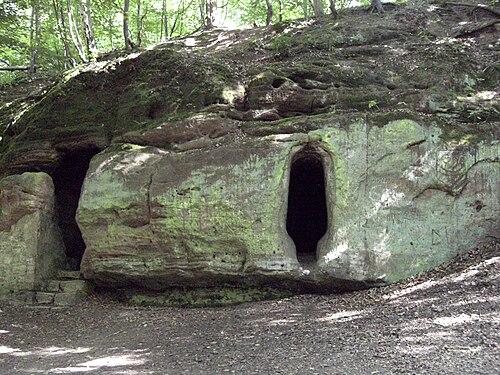
d: 1600
Simon Bingelhelm
Summary
Name:
Nickname:
The Thousand Devils of HalberstadtYears Active:
1599 - 1600Status:
ExecutedClass:
Serial KillerVictims:
26Method:
Stabbing / Assault / Mutilations / BludgeoningDeath:
June 02, 1600Nationality:
Germany
d: 1600
Simon Bingelhelm
Summary: Serial Killer
Name:
Simon BingelhelmNickname:
The Thousand Devils of HalberstadtStatus:
ExecutedVictims:
26Method:
Stabbing / Assault / Mutilations / BludgeoningNationality:
GermanyDeath:
June 02, 1600Years Active:
1599 - 1600bio
Simon Bingelhelm was born in 1565 in Halberstadt, a city in the region now known as Saxony-Anhalt, within the Holy Roman Empire. Details about his early life, upbringing, family background, or education remain largely undocumented. What is known, however, is that by the late 16th century, Bingelhelm had built a notorious reputation that spread across multiple towns and villages, earning him the infamous nickname "The Thousand Devils of Halberstadt." This moniker reflected both the scope and savagery of his criminal activity.
Though there is no precise account of when he began his criminal life, Bingelhelm operated during a period of intense religious and social upheaval in early modern Germany, where weak law enforcement in rural areas allowed highwaymen, robbers, and murderers to flourish. His life of crime was defined by a mixture of petty theft, armed robbery, and increasingly sadistic acts of violence that would come to shock even the authorities of his time.
His crimes spanned a wide geographical area, including numerous towns such as Halberstadt, Wernigerode, Hoym, Aschersleben, and Reddeber. He also operated in villages and forests, often taking advantage of isolated locations to ambush victims. His escalating pattern of violence suggested a deeply disturbed psyche, with no known records of remorse or attempts at reformation.
murder story
Simon Bingelhelm was arrested in the spring of 1600 under suspicion of being the man behind a wave of violent crimes plaguing the region. After his arrest, he was transported to Gröningen, then the seat of the Diocese of Halberstadt and residence of Duke Henry Julius of Brunswick. Held in captivity, Bingelhelm was subjected to intensive interrogation and torture. During these sessions, he confessed to a staggering total of 71 crimes — including participation in 26 murders and numerous acts of robbery, theft, rape, and arson.
Among the most heinous of his confessed crimes were the murders of young women and children. He admitted to the killing of a young woman in Benzingerode eight days before Pentecost in 1599, and to the attempted rape and subsequent murder of an 18-year-old girl in a forest between Hornburg and Osterwieck. One of his most gruesome confessions involved the murder of a pregnant woman, whose unborn child was removed from her body — according to his statement — so that Bingelhelm could use the entrails to fashion candles for use during his next burglary. He was also accused of involvement in the robbery and killing of at least five infants.

Bingelhelm further admitted to setting fire to the Drübeck Abbey in 1599, claiming to have watched the blaze from a nearby mountain. He also confessed to stealing religious items, including a chalice from a church in Rade and eleven talers from a donation box at St. George’s Church in Derenburg. His criminal acts spanned a large number of towns, with thefts and assaults occurring in Seehausen, Heimburg, Klein Quenstedt, Westerhausen, Dardesheim, Prenzlau, Salzwedel, Haldensleben, and many others.


Ultimately, Bingelhelm’s confessions revealed a pattern of sadistic violence and desecration that included stabbing a man in Helmstedt over two groschen and breaking into the Martinique Church to rob the poor box. His violent behavior showed no bounds — crossing lines of morality, religion, and even humanity.
On 2 June 1600, Simon Bingelhelm was executed in Gröningen. The execution was carried out in a brutally public fashion typical of the era: he was first tortured with red-hot pincers “for honour,” then dragged to the town court, and finally quartered. His death was not only a punishment but a symbolic warning to others — a fate reserved for the most reviled of criminals.